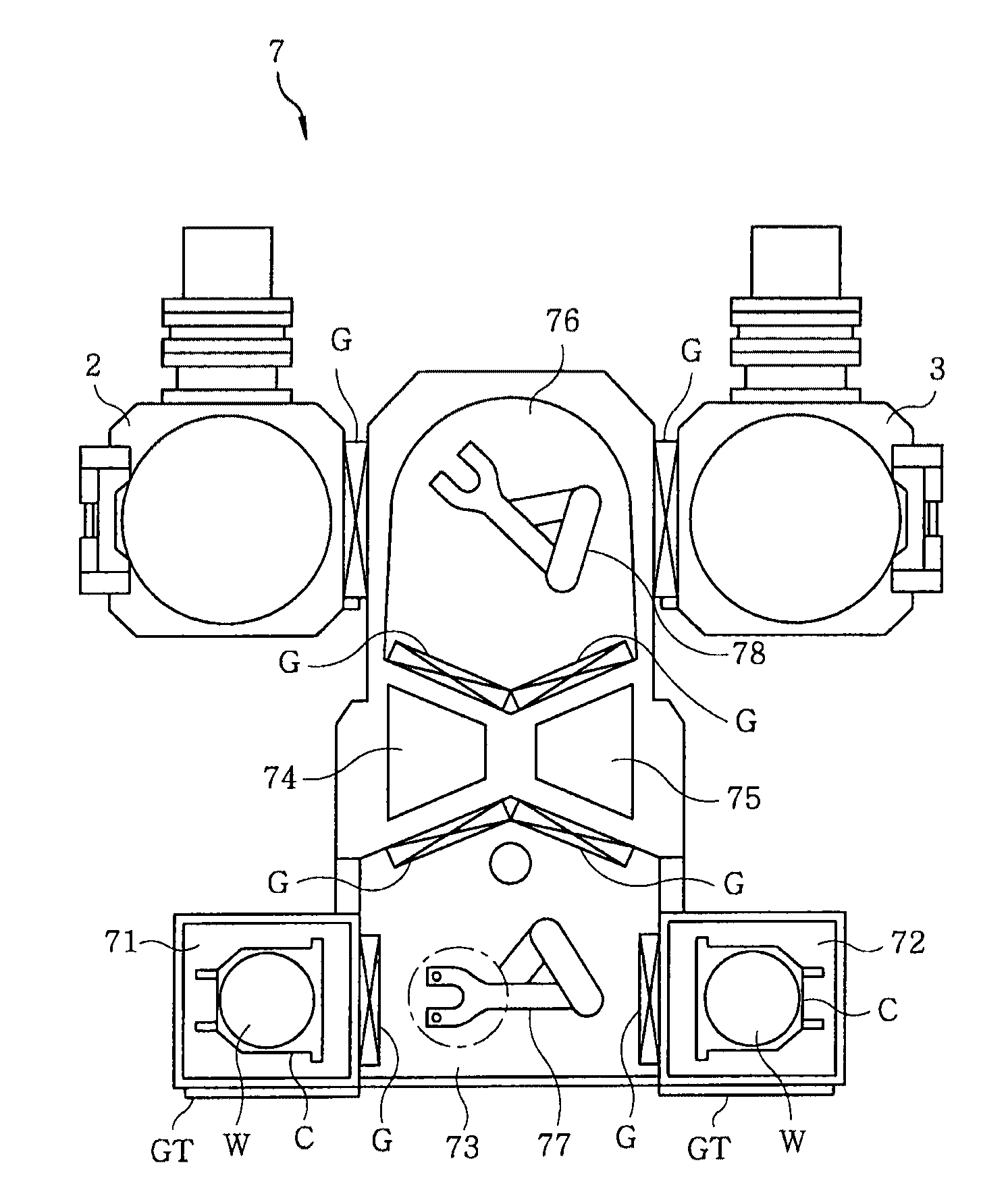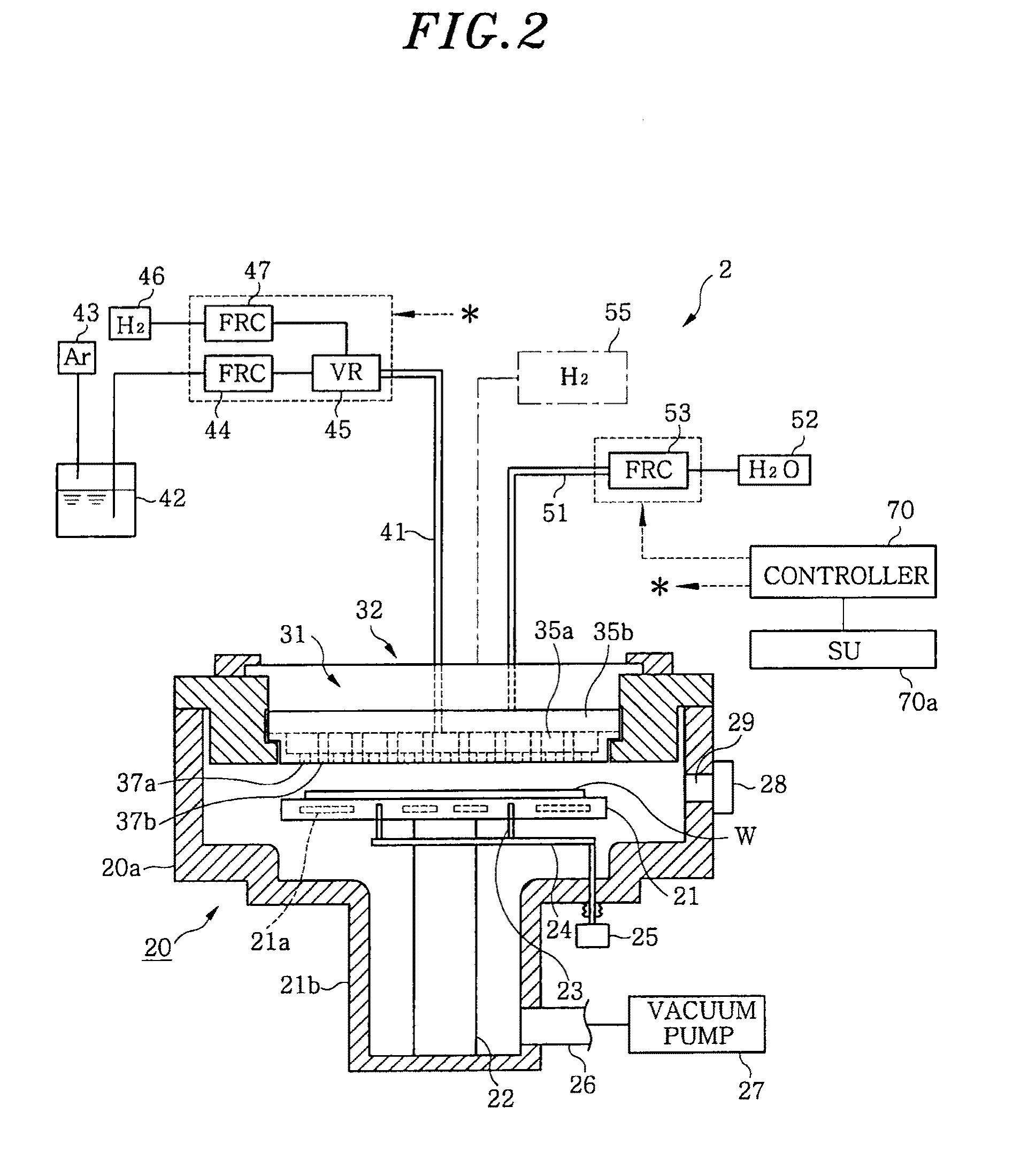Semiconductor device manufacturing method, semiconductor device manufacturing apparatus, computer program and storage medium
a semiconductor and manufacturing method technology, applied in the direction of semiconductor/solid-state device details, chemical vapor deposition coating, coating, etc., can solve the problems of reduced production yield, copper line defect, difficult to improve the adhesiveness between the copper film and the base film, etc., to prevent the formation of an organic impurity layer, reduce the film forming temperature, and high oxidation tendency
- Summary
- Abstract
- Description
- Claims
- Application Information
AI Technical Summary
Benefits of technology
Problems solved by technology
Method used
Image
Examples
example 1
Consideration of Example 1 and Comparison Example 1
[0082]As shown in FIG. 8A, in Example 1 in which the copper film was formed in an environment containing water molecules with the supply of water vapor, an organic impurity layer was formed to have a thickness of 1.5 nm and, namely, the organic impurity layer was hardly formed. On the other hand, in Comparison example 1 without the supply of water vapor, as shown in FIG. 8B, an organic impurity layer was formed to have a thickness of 6 nm, which is four times that in the case performed with the supply of water vapor. The formation of the thick organic impurity layer deteriorates adhesiveness between the base film and the copper film.
Example 2
[0083]A heat treatment was performed on the wafer W obtained in Example 1. An interface of the copper film and the base film was photographed by SEM and the result thereof is shown in FIG. 9A. Further, heat treatment conditions are as follows.
[0084](Heat Treatment Conditions)
[0085]Processing atm...
example 2
Consideration of Example 2
[0089]As shown in FIG. 9A, in Example 2 in which the heat treatment was performed, it was checked that a film was formed at a thickness of about 5 nm at the interface between the barrier metal layer (Ti) and the copper film. When the film was observed in an enlarged state, a crystal structure of Cu3T1 was checked and it could be seen that an alloy layer of copper and titanium was formed. On the other hand, it was checked that a film was formed at a thickness of about 1.5 to 2.5 nm even before the heat treatment. When the film was observed in a further enlarged state, there was no crystal structure similar to that of Example 2 and an amorphous state was checked. It was considered as an oxide layer of titanium formed when the copper film was formed in an environment containing water molecules.
Example 3
[0090]In accordance with the semiconductor device manufacturing method described in the second embodiment of the present invention, ruthenium having a low oxida...
example 3
Consideration of Example 3
[0099]As shown in FIG. 10, an oxide layer was not checked between copper and ruthenium. Further, in both trenches having widths of 80 nm and 90 nm, copper could be uniformly buried without a void.
PUM
| Property | Measurement | Unit |
|---|---|---|
| temperature | aaaaa | aaaaa |
| width | aaaaa | aaaaa |
| temperature | aaaaa | aaaaa |
Abstract
Description
Claims
Application Information
 Login to View More
Login to View More - R&D
- Intellectual Property
- Life Sciences
- Materials
- Tech Scout
- Unparalleled Data Quality
- Higher Quality Content
- 60% Fewer Hallucinations
Browse by: Latest US Patents, China's latest patents, Technical Efficacy Thesaurus, Application Domain, Technology Topic, Popular Technical Reports.
© 2025 PatSnap. All rights reserved.Legal|Privacy policy|Modern Slavery Act Transparency Statement|Sitemap|About US| Contact US: help@patsnap.com



